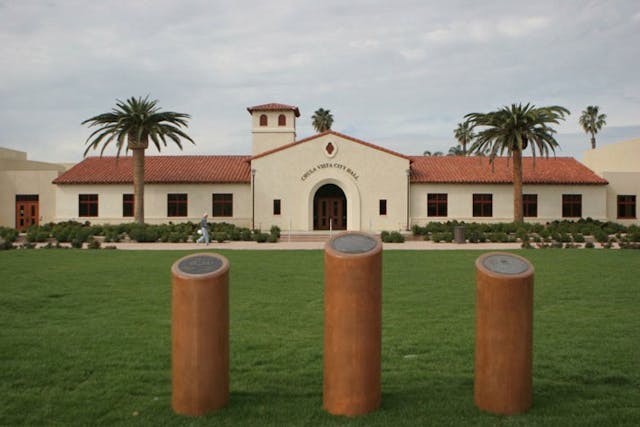A Big Brown Paper Shopping Bag and Green Stamps: It must be Christmas in Logan Heights
 The smell of Tamales and Cannery Working mothers carrying Big Brown paper shopping bags full of S and H Green Stamps on the San Diego Transit Bus 11 which goes through the heart of Logan Heights, tells you it’s the start of Christmas season.
The smell of Tamales and Cannery Working mothers carrying Big Brown paper shopping bags full of S and H Green Stamps on the San Diego Transit Bus 11 which goes through the heart of Logan Heights, tells you it’s the start of Christmas season.
Its cannery payday and all the mothers are headed downtown to shop for their kids and family or to the S and H Green Stamps Redemption Store to exchange stamp books for gifts. They know without being told, that each full page of the stamp book is 50 points and the book has 24 pages, so a full book equals 1500 points, four books equals 6000 points which can get you a nice Westinghouse toaster or coffee pot. It’s a lot of work collecting and redeeming stamps, but it’s something mothers just do for their families.
Logan Heights has had its unique Christmas tradition through the stages of the American Experience. Hard working parents, uncles, aunts, cousins, abuelitos and vecinos all working together to share a little joy for everybody. Joy at least on Xmas, is for all people from the least to the mighty. All God’s creation must be welcomed during this season, but God reserves a special light for children.
Since the early 1900s when the first wave of Mexican immigrants came to Logan Heights, they relied on Our Lady of Angels, the first Catholic Church in San Diego, for their spiritual and Christmas celebratory needs. Later, Our Lady of Guadalupe Church became the focal point of the mass celebrations and Posadas, and Tamaladas usually held after the Misa De Gallo.
The Mexican Protestant Churches like the Iglesia Nazareno, Metodista Libre and Mexican Baptist and others would offer their Christmas play to the neighborhood, as a way to both celebrate their faith and encourage new membership. Later the Neighborhood House, which was founded by the Marston family, became the means by which the Mexican community could express its holiday traditions, while absorbing the assimilation experience, promoted by the Neighborhood House.
Christmas at the Neighborhood House, especially in our country’s darkest hours, like the Depression, World War 2 and Korea were extremely important to the Mexican community, because for many families, it was their only Christmas. The Neighborhood House taught families, especially the Mothers how to create Christmas magic, by being creative with what little resources, they found in their life. The focus always had to be the children, as they would be, the ones to benefit from the better life that was around the corner.
The Fish Canneries on the San Diego waterfront, hiring women to clean fish on a piecemeal basis, allowing them to earn their own money, surely had to be prosperity. Mothers, Nanas, Tias, primas,parientes and vecinas could now help support their families and maybe, just maybe they could get their kids a nice Christmas Gift. The tradition of a child centered Christmas is still going strong, these many years later.
The recollection of the Christmas stories from those simpler times brings out the child in all of us. They take us back to our own childhood and experiences. We reflect and for at least a moment, we see our mother, with a Big Brown Paper Shopping Bag walking down 38th and National tired from the Caneria and we knew she had bought little things for all of us. The cheap mesh candy stocking that has rock hard candies and one or two super hard nuts would magically appear from her shopping bag.
Calling on her Neighborhood House training, she would buy, with her caneria money, brick printed crepe paper and cover a desk or table to look like a fireplace. She would go to Dailey’s Hardware Store, on National Avenue and buy Xmas lights and tinsel to throw on the little Christmas tree, that would be propped up on the crepe paper covered table, so it would show in the window. My older sister tells me about one Christmas, when my brother first went to the Korean War, that year my mother bought a bunch of used dolls and made them new clothes and donated them to the Salvation Army, on behalf of her son, in Korea.
Our household included my parents, 7 brothers and sisters, and a girl cousin and our grandmother, who also lived with us. So gift giving had to have a practical edge to it. The boys would get shirts, jeans or a jacket, socks, and underwear, which my mom would lay away at Pragers Department store on 32nd and National Avenue.
Our only hope for toys would be the Christmas sale at Rexall Drugs store on 43rd and National. We always wanted sports stuff like gloves and bats, but we were reluctant to ask. The sporting goods stores like Higgins and Croshwaite, downtown San Diego were considered expensive and the matter of cost would open up the possibility of my father getting the equipment from his friend in Tijuana. We wanted to avoid that at all cost. In those days, if you had Tijuanero stuff, you got messed with, on the playground or park.
The Logan Heights Christmas tradition that started many years ago was premised on imparting joy, at least momentarily for all Gods’ creations, from the mighty to the least.
I can remember hearing stories about how even the neighborhood Winos were included in the Christmas Festivities.
The story goes that in the late 1940s,early 1950s,my father operated a scrap yard at the foot of 38th and Z Street, near where today, the Chollas Creek runs through Southcrest Park. This was right after World War 2 and sadly some hard luck vets, couldn’t adjust and lost themselves and their dignity, to drink. They all congregated at night, in the creek, right next to the scrap yard. When it rained my dad would let them sleep, in the cars that were getting ready to be scrapped or sold in Tijuana.
The Winos appreciated the shelter and my dad would give them coffee and the nasty hardened pan dulce that we would no longer eat at the house. The scrap yard became their respite from a cruel world.
They were a cast of characters, Joe Cota, a native American, who had been in the Navy and discharged for stabbing a guy over money, Red Callaway a proud Okie from Oklahoma City, who would drink and fight, at the drop off a hat, Two Gun Howard Morales, who thought he could fight and hold his liquor, come to find out after so many lost bar fights, he concentrated on drinking. Their numbers would ebb and flow depending on their binges.
This one Christmas Eve, it got very cold and the families on the block, felt bad for the Winos, so one by one they started bringing them food and blankets, to the scrap yard. They thanked everybody for their kindness and instead of starting in on the food they said they would save it for later. Finding this out, it bothered my mother, so she went to the yard to ask my dad what happened to the food. My Dad explained to my mother that he had arranged with Woodie’s Liquor store, to let guys get their favorite bottle of Muscatel, Petrie and Port or whatever. He explained that before anything else, they had to drink. The kindness in the gesture was recognized, but never repeated.
Today many years later it’s good to see that family and kids remain the focus of Christmas and at least for a moment, we can all recall fondly and retell that family Christmas story one more time.



 Arturo Castañares
Arturo Castañares


